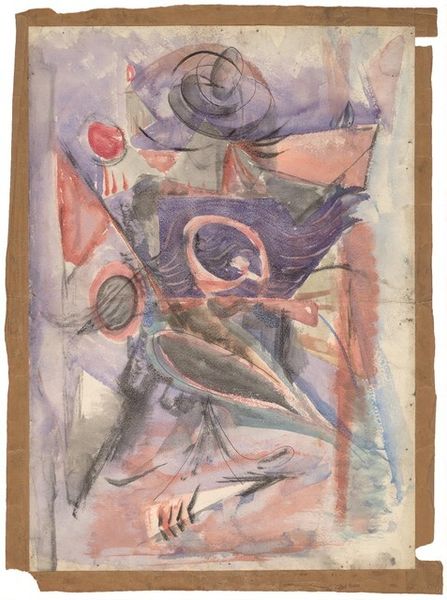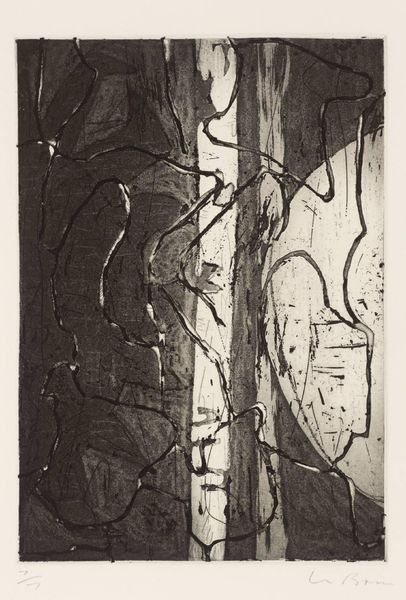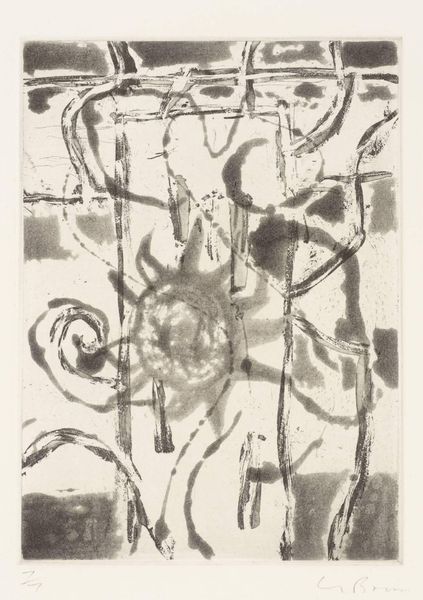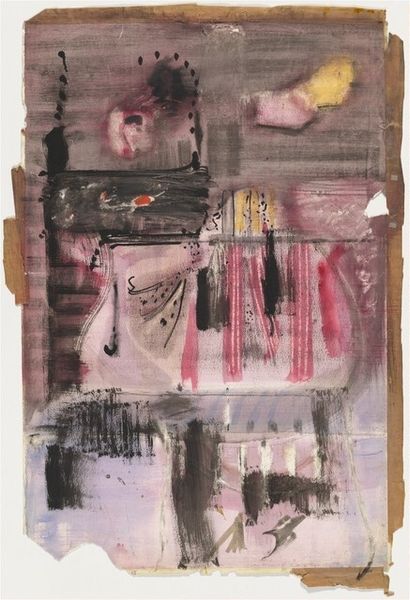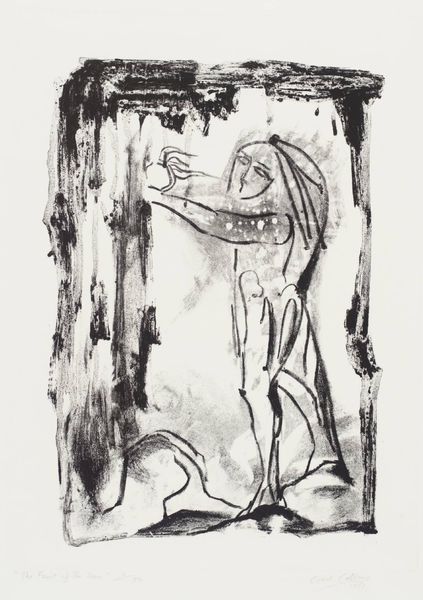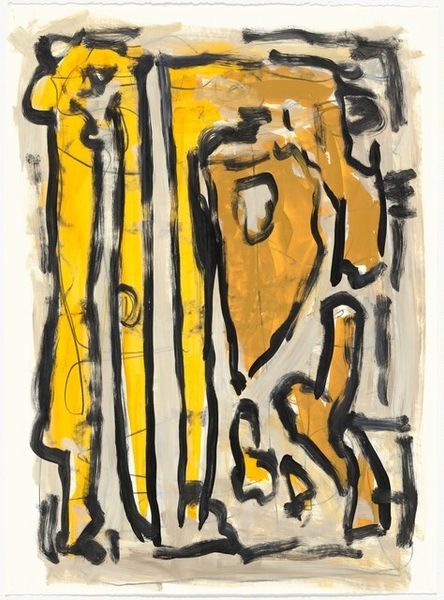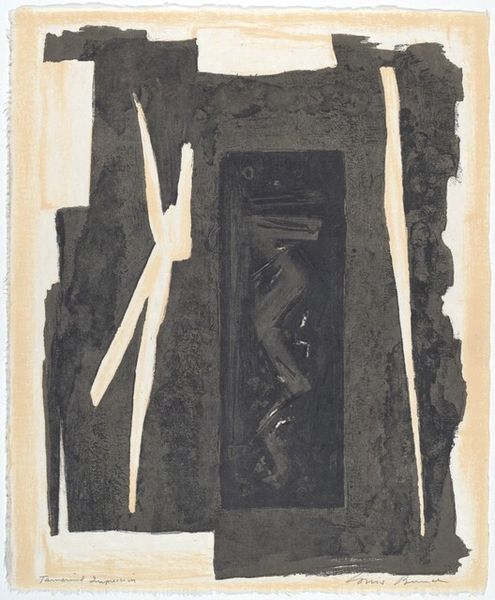![Untitled [recto] by Mark Rothko](/_next/image?url=https%3A%2F%2Fd2w8kbdekdi1gv.cloudfront.net%2FeyJidWNrZXQiOiAiYXJ0ZXJhLWltYWdlcy1idWNrZXQiLCAia2V5IjogImFydHdvcmtzLzk5MGNlNjAzLTVlNzEtNGY2MS05ZTg5LTFhN2U1Y2UwMDU1Mi85OTBjZTYwMy01ZTcxLTRmNjEtOWU4OS0xYTdlNWNlMDA1NTJfZnVsbC5qcGciLCAiZWRpdHMiOiB7InJlc2l6ZSI6IHsid2lkdGgiOiAxOTIwLCAiaGVpZ2h0IjogMTkyMCwgImZpdCI6ICJpbnNpZGUifX19&w=1080&q=75)
drawing
#
abstract-expressionism
#
drawing
#
coloured pencil
#
abstraction
Dimensions: overall: 54 x 38.3 cm (21 1/4 x 15 1/16 in.)
Copyright: National Gallery of Art: CC0 1.0
Curator: Well, this untitled drawing by Mark Rothko, likely from the mid-1940s, is quite intriguing. Made with colored pencil, it definitely departs from what many expect of Rothko. Editor: Yes, it certainly does! I immediately notice its tentative, searching quality. The colors are muted, almost melancholic, and the lines suggest ghostly, figural forms emerging from a hazy ground. Curator: Indeed. Rothko, even during this period, was deeply concerned with conveying universal human emotions through abstraction. Consider the sociopolitical climate post-World War II. Artists, including Rothko, grappled with expressing the inexpressible—the trauma, the disillusionment—through innovative visual languages. Editor: Precisely. Looking closely, one can see the deliberate process. The layered strokes of colored pencil aren’t simply aesthetic; they're a form of building, almost like textile construction. Rothko isn't just depicting form, he's building emotional weight through repetitive gestures. Notice how the varying pressure and density affect your sense of form, rhythm and volume. Curator: Absolutely. It's interesting to think about this drawing in relation to Rothko's gradual shift towards pure color field painting. You can see the seeds of that development here: a move away from recognizable figures towards more ambiguous shapes, where the focus shifts toward surface and light. The 'drawing' of his later work involves not only his technique for paint mixing, and brush strokes, but also decisions surrounding the physical arrangement of artwork when he exhibits it in a room. Editor: Agreed. He explores these open, ethereal, ambiguous forms—perhaps reflections on personal and shared trauma experienced globally due to the war. How do we communicate such things when there's really no pre-existing cultural lexicon for the situation? Through abstraction. That raw exposure of self really reveals its profound social and emotional context. It allows you to question if and how the materials themself also carry emotions? Curator: It definitely shows his deep exploration during the period and one can now perceive and comprehend the scale of Rothko's success and influence given its historical time-line and current exhibitionary framework across museums, public institutions and the global economy. Editor: Well, its tactility certainly draws us to the intense interiority of experience that abstract expressionism so powerfully encapsulates, inviting one to delve into its raw materiality.
Comments
No comments
Be the first to comment and join the conversation on the ultimate creative platform.
